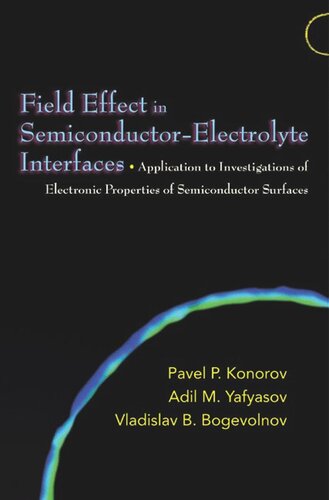

Most ebook files are in PDF format, so you can easily read them using various software such as Foxit Reader or directly on the Google Chrome browser.
Some ebook files are released by publishers in other formats such as .awz, .mobi, .epub, .fb2, etc. You may need to install specific software to read these formats on mobile/PC, such as Calibre.
Please read the tutorial at this link: https://ebookbell.com/faq
We offer FREE conversion to the popular formats you request; however, this may take some time. Therefore, right after payment, please email us, and we will try to provide the service as quickly as possible.
For some exceptional file formats or broken links (if any), please refrain from opening any disputes. Instead, email us first, and we will try to assist within a maximum of 6 hours.
EbookBell Team

4.1
80 reviewsThis book presents a state-of-the-art understanding of semiconductor-electrolyte interfaces. It provides a detailed study of semiconductor-electrolyte interfacial effects, focusing on the physical and electrochemical foundations that affect surface charge, capacitance, conductance, quantum effects, and other properties, both from the point of view of theoretical modeling and metrology. The wet-dry interface, where solid-state devices may be in contact with electrolyte solutions, is of growing interest and importance. This is because such interfaces will be a key part of hydrogen energy and solar cells, and of sensors that would have wide applications in medicine, genomics, environmental science, and bioterrorism prevention.
The field effect presented here by Pavel Konorov, Adil Yafyasov, and Vladislav Bogevolnov is a new method, one that allows investigation of the physical properties of semiconductor and superconductor surfaces. Before the development of this method, it was impossible to test these surfaces at room temperature. The behavior of electrodes in electrolytes under such realistic conduction conditions has been a major problem for the technical realization of systems that perform measurements in wet environments. This book also describes some material properties that were unknown before the development of the field effect method.
This book will be of great interest to students and engineers working in semiconductor surface physics, electrochemistry, and micro- and nanoelectronics.